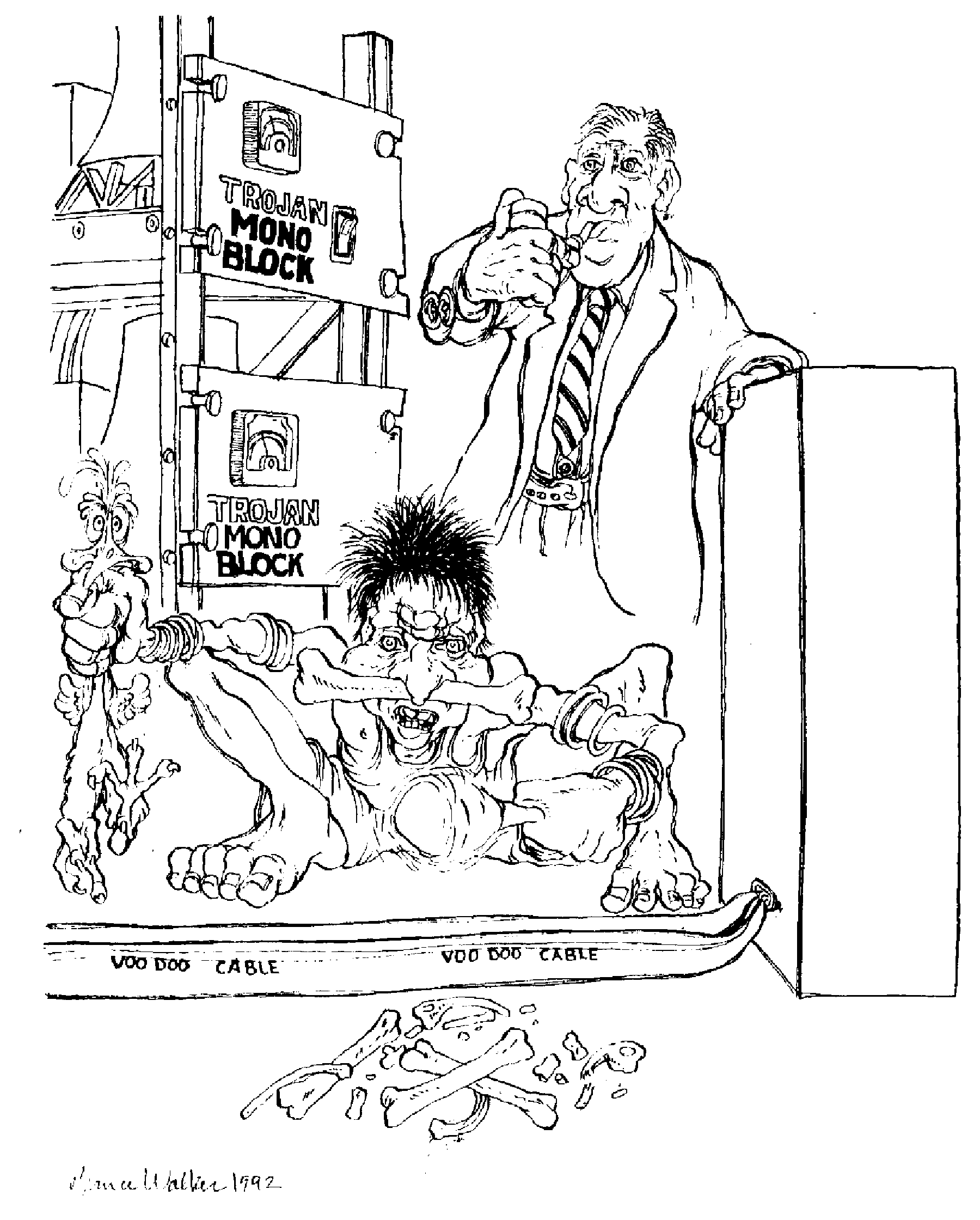How many times have you read a review of some recording, some system, or some individual piece of gear that said something like this? "The orchestra was rendered perfectly, with each individual instrument hung in its own separate space, emerging from a perfectly black background…" Or maybe the reviewer had enthused that "It was easy to tell that there were three rows of violins," and had gone on to describe the spaces between them and between the violin section and the other instrumental sections as "velvety black," "…with no sound at all to interfere with sonic imaging or mar the purity of the soundstage." Perhaps he just wrote that "Each individual note was crystal-clear, against the perfect silence of a dead-black background."
That's vividly poetic, but can it really be true? And, if it is true for whatever thing is being described, is that really a good thing?
To find the answer, let's first take a look at the nature of sound—not just music, but any sound at all.
As we all know, sound is a series of alternating waves of higher and lower pressure in the air that travels to our ears from its source. Those pressure waves create motion in our eardrums that is communicated to our inner-ear mechanisms, which convert it to the neural impulses that we perceive as sound. In an unbounded space (no walls or other boundaries), those pressure waves act just like a "field" (HERE) expanding equally in all directions from their point of origin, and declining in intensity at any given point in accordance with the Inverse Square Law. (HERE)This continues until all of their energy is dissipated, absorbed, converted to something else (heat), or becomes indistinguishable from the ambient noise level.
When a boundary is added, one or more of just three things will happen: The sound energy may be absorbed by the boundary; may be reflected by it; or some of each may happen, depending on the nature of the boundary. It might also be dispersed, but dispersion is just a different kind of reflection—one where the energy is reflected in multiple directions instead of just one.
When multiple boundaries exist (as when a sound is produced in a room, a stage, a studio, or a concert hall, with (however many) walls, a floor, and a ceiling), all of the sound that is not absorbed is reflected in one or multiple directions where, in every case, the angle of incidence is equal to the angle of reflection. Most importantly, each of those reflected sounds will again be reflected or absorbed each time it hits another boundary, and will continue to be reflected again and again, until, finally, all of the sound energy is either absorbed or simply disappears into the ambience.
Sound in a bounded space can, therefore, be seen as analogous to the surface of the ocean, where, even during a dead calm, the water is never completely free of wave action, but still moves in response to waves that may have been long ago and far away. The sound in any defined space—think recording studio, concert hall, or any other enclosed venue—acts just like the water in the ocean or in a "ripple tank"—a liquid-filled open-top container, used for demonstrating wave motion. (An electronically simulated ripple tank can be found HERE. Go to it, click on "Add Border" and watch for at least several seconds to see what happens. Try different settings later; it's fun!) Once it's started, the sound spreads, hits the walls, bounces off, and keeps on bouncing, until the entire space is completely filled with complex patterns of incoming new sound and the remaining ripples of undissipated, unabsorbed old sound, all going on at the same time.
It's that undiminished reflected sound (plus whatever random noise there might be) that constitutes the "ambience" of every venue, and it's a vital part of our musical enjoyment. Music played in an anechoic chamber—a room heavily treated so that it has no reflected sound at all—sounds "flat," lifeless, and totally unexciting. And that's where the issue of "black" comes in.
Black isn't really a color. Instead, it's the total absence of color (the total absence of light), with white being its opposite; the presence of all colors, mixed. In a ripple tank (or the ocean, to continue the analogy), black would be the equivalent of no energy at all; a perfectly motionless, dead flat and ripple-free surface, and white might be the equivalent of a fully active surface, with many generations of new and reflected energy appearing on it as a hugely complicated ripple pattern.
So how does this apply to audio? Easy: Remember the "three rows of violins" mentioned earlier? In reality, the space between them is not black at all, but is filled with the violins' own sound (from just the tiniest moment ago); the sound of other nearby instruments; the sound all of the other instruments of the orchestra and the reflected and re-reflected sound of all of them, continuing on and on until it's either fully dissipated or lost in the totality of the ambient sound.
If anything, the sound of the space between instruments is "white" (or near to it) instead of black, and it's that white space that provides us with much of the detail, the "liveliness," and the soundstage presentation of the music we listen to. And no, white space is not the same as "white noise." White noise is "…a random signal having equal intensity at many different frequencies, giving it a constant power spectral density." (HERE) In short, white noise has all of its frequencies at the same level. The "white" (my term) sound in a concert hall or recording venue has only the frequencies present in the music, present only at the intensity level at which they appear in the music, less whatever frequency-specific losses might have occurred because of absorption by the room, the people or things in it, or the materials of which the room's surfaces are made.
For the true-to-life musical presentation that's every audiophile's professed goal, having a black background is exactly the wrong thing. What makes it black is the absence of all of the low-level detail and ambient sound that helps to give the music its character and to define for the listener the shape and size of the recording venue.
Having notes "pop" out of a velvet-black background is certainly fun, though, and can easily be achieved if that's what people want. All that would be necessary, in this now-digital world, would be to construct a playback algorithm that would ignore the first few bits of the recorded signal. That would eliminate the lowest-level sounds entirely and leave an absolutely black background for the music. Unfortunately, it would also eliminate all room ambience and all of the rest of the very lowest-level information that would otherwise be there enhance your musical enjoyment.
Musical backgrounds aren't black. Even if recorded in an open space, the venue is almost always filled with the sounds of other instruments or performers, and with the ambient noise of the venue itself. That makes the background almost always "white," and the better the background can be recorded and the better it can be retrieved and recreated by your playback equipment, the more realistic your sound will be, and the more music will be there for you to enjoy.
In audio, black is the absence of information, and audiophiles like me want as much sonic information as we can get.






































